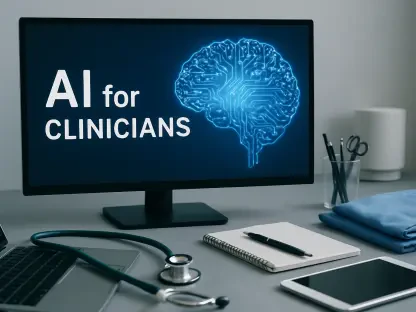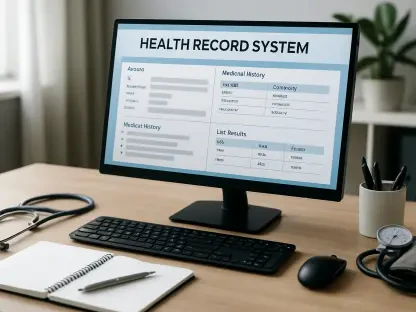Artificial intelligence (AI) tools have been rapidly transforming various sectors, with the medical field being no exception. The potential of AI to enhance clinical decision-making is immense, yet the regulatory landscape has been a hot topic among experts and stakeholders. Former FDA Commissioner Scott Gottlieb recently urged the Food and Drug Administration (FDA) to loosen its regulatory oversight on certain AI tools. His proposition stirred the ongoing debate about balancing innovation with patient safety.
Understanding Gottlieb’s Argument
Changes in AI Regulation and Their Impact on Innovation
Gottlieb, who served as FDA Commissioner from 2017 to 2019 and is now a senior fellow at the American Enterprise Institute, expressed his concerns in a JAMA article. He argued that the FDA’s recent changes to AI regulation have led to uncertainties that may stymie innovation. According to Gottlieb, the FDA’s 2022 final guidance, which expanded oversight to include several risk-scoring tools, inadvertently discouraged developers from enhancing AI technologies. By creating a cautious environment, the guidance could hinder the deployment of beneficial AI tools in clinical settings.
The updated regulations were a response to growing concerns about automation bias and the reliability of clinical decision support (CDS) tools, especially in time-sensitive medical situations. Tools like Epic’s sepsis risk-scoring software faced criticism for making poor predictions despite their widespread use. Critics emphasized the potential risks of excessive reliance on these tools without adequate oversight. Gottlieb’s stance is that a more relaxed regulatory approach could encourage developers to incorporate advanced analytical features directly into electronic medical records (EMR) systems. This would ultimately foster innovation and enhance the utility of these AI tools.
The Impact of Administrative Changes
The broader political environment has also influenced the debate. An executive order from President Trump called for the removal of restrictive AI policies, aligning with Gottlieb’s perspective. He highlighted that the stringent regulations have led EMR developers to avoid embedding advanced analytical capabilities in their systems. Instead, developers have opted to create stand-alone tools, which may not integrate as seamlessly into clinical workflows, thereby potentially reducing their effectiveness and utility.
Gottlieb advocates for a regulatory approach that exempts AI tools designed to supplement clinicians’ information from premarket review, provided these tools do not offer autonomous diagnoses or treatment decisions. He believes that this exemption would strike a balance between encouraging innovation and ensuring that clinicians retain the ability to make informed decisions without relying too heavily on AI. This perspective resonates with a broader desire to roll back stringent regulations and foster a more innovation-friendly environment in medical AI.
The Need to Balance Innovation and Safety
Concerns About Automation Bias and Reliability
The push for looser regulations isn’t without its critics. Concerns about automation bias and the reliability of AI tools are valid considerations that need to be addressed. Automation bias occurs when clinicians over-rely on AI recommendations, potentially overlooking important clinical insights. This phenomenon underscores the need for rigorous oversight to ensure that AI tools provide reliable and accurate information.
In the case of Epic’s sepsis risk-scoring software, widespread adoption did not correlate with improved patient outcomes, raising questions about the utility of such tools. The FDA’s 2022 guidance aimed to mitigate these risks by bringing such tools under stricter oversight. However, it also created a cautious environment where developers might limit the capabilities of their AI tools to avoid regulatory complexities.
Balancing Regulation and Innovation
The ongoing debate underscores the importance of a well-considered regulatory framework that balances the need for innovation with patient safety. Gottlieb’s suggestion to revert to earlier interpretations of the 21st Century Cures Act, which would exempt more CDS software from premarket review, aims to address the current constraints on innovation. By fostering a more permissive environment, developers could more freely integrate advanced analytical capabilities into their systems.
However, it’s crucial that any regulatory adjustments account for the potential risks associated with less oversight. A refined approach that evolves with technological advancements is necessary. Regulations should be flexible enough to accommodate innovation while stringent enough to ensure patient safety. This balancing act is particularly vital in the medical field where the stakes are high and the margin for error is minimal.
Future of AI in Medical Decision-Making
Evolving Regulations and Technological Advancements
As technology continues to rapidly evolve, regulatory frameworks must keep pace. The FDA’s current stance reflects an attempt to manage the growing complexities and risks associated with AI in medical decision-making. By ensuring rigorous oversight, the FDA aims to protect patient safety while promoting the responsible use of AI tools. However, Gottlieb’s call for reverting to a less stringent regulatory approach highlights the need to foster innovation. The challenge lies in developing a regulatory framework that evolves with the technology, recognizing AI’s potential to significantly enhance clinical decision-making.
Potential Next Steps and Considerations
Artificial intelligence (AI) tools have been making significant strides in transforming various industries, and the medical field is no exception. The potential for AI to improve clinical decision-making processes is vast. However, the regulatory environment surrounding these tools has been a subject of intense discussion among experts and stakeholders. Former FDA Commissioner Scott Gottlieb recently called for the Food and Drug Administration (FDA) to ease its regulatory constraints on certain AI tools. His suggestion has reignited the ongoing debate about how to strike the right balance between fostering innovation and ensuring patient safety. Gottlieb’s proposal emphasizes the potential benefits of AI in healthcare while also highlighting the need to adapt regulatory frameworks to keep pace with technological advancements. This issue is crucial as overly stringent regulations could stifle innovation, whereas lenient regulations could compromise patient safety. The challenge lies in finding an equilibrium that allows the medical field to harness the full potential of AI while safeguarding public health.









